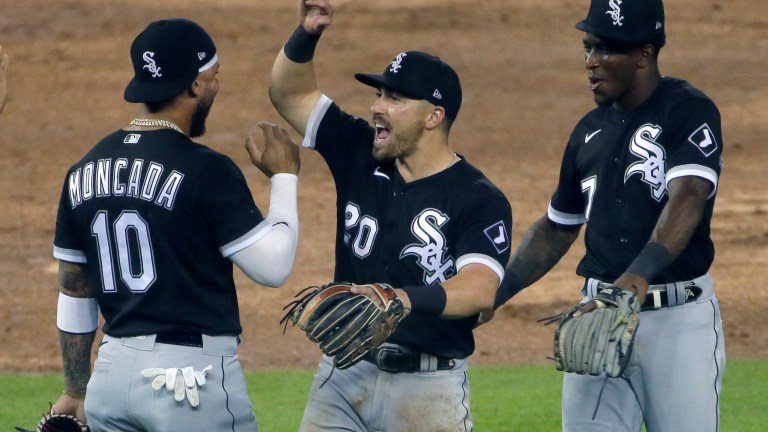Baseball Stats Explained: The Triple Slash Line

This series will aim to provide insight into common(and not-so-common) baseball statistics. We will start with the basics and build up to more advanced concepts. Follow along and don’t be afraid to ask questions in the comments or reach out to me on Twitter!
Batting Average (AVG or BA)
Batting Average is the number of times a player hits safely per the number of at-bats they have. An at-bat is any plate appearance that ends in a non-sacrifice out, a hit, a fielder’s choice or an error.
Batting average has long been the go-to statistic for valuing player performance, but has quickly become obsolete with knowledge that power drives run scoring, but that’s not to say that batting average is unimportant. Many of the best players in baseball hit well over .300. League average batting average is an all-time low .238 this season.
On base Percentage (OBP)
On Base Percentage is the percentage of plate appearances that a batter reaches base safely via hit, walk or hit by pitch, but does not include reaching by error, fielder’s choice or dropped third strike.
On Base Percentage was invented by Branch Rickey, who was the General Manager for the Brooklyn Dodgers in the 40’s and responsible for breaking the color barrier by signing Jackie Robinson. OBP became synonymous with the analytics movement in baseball in the 2000’s when Billy Beane, General Manager of the A’s, built a playoff team from the idea that he only needed players to get on base. In 2002, he signed undervalued players that walked more than league average. The A’s had the 7th best OBP in baseball that season.
On Base Percentage continues to be one of the most basic and most useful stats as it gives more context than batting average. The old adage, “A walk is worth as much as a single” will always hold true.
Slugging Percentage (SLG)
Slugging Percentage is much like batting average, but it gives context to a batter’s power ability. The formula for slugging percentage is (1B + 2x2B + 3x3B + 4xHR)/Plate Appearances. Although a double isn’t exactly double in run scoring value than a single and a homerun isn’t 4 times the value of a single, slugging percentage is useful because every hit is not created equal.
For example, Nick Madrigal is hitting .305 and J.D Martinez is hitting .309, but Madrigal’s slugging percentage of .425 is much less than J.D’s slugging percentage of .545.
Triple Slash Line –
If you’ve watched a baseball broadcast or been to a game in person, a batter’s triple slash line will often appear as they come to bat. The triple slash is simply the three stats we just covered in order, AVG/OBP/SLG. J.D Martinez triple slash line this season is .309/.370/.545.
On-base Plus Slugging(OPS)
On-base Plus Slugging, often referred to as OPS, is, as the name suggests, on base percentage plus slugging percentage. OPS is one of the most useful hitting stats because it gives context to a batter’s ability to get on base and hit for power. The best hitters in baseball will have the highest OPS numbers in the league.
Vlad Guerrero Jr. currently leads baseball with a 1.112 OPS. Jackie Bradley Jr. has an OPS of .500, which is lowest in baseball. Average OPS in 2021 is .712. Any batter with an OPS above .712 can be considered above average this season.

